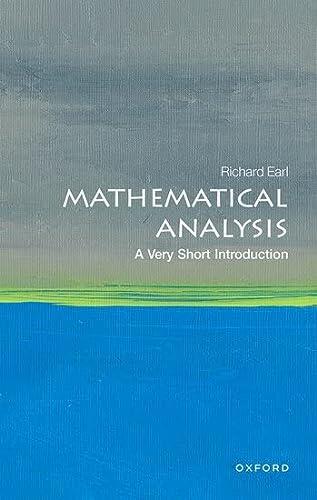
Mathematical Analysis: A Very Short Introduction
by
Richard Earl
No ratings yet
Science & Technology
Format
Paperback
Pages
224
Language
English
Published
Sep 22, 2023
Publisher
Oxford University Press
ISBN-10
019886891X
ISBN-13
9780198868910
Description
Richard Earl's exploration into mathematical analysis serves as a compelling entry point for those intrigued by the foundations of mathematics. The succinct nature of this introduction invites readers to grasp not only the essential concepts but also the significance of analysis in various fields. Earl breaks down complex ideas, revealing the beauty and practicality of mathematical thought, making it accessible to both novices and those with some background in mathematics.
Through clear explanations, Earl discusses the critical role that limits, continuity, and convergence play in forming the core of analysis. He emphasizes how these concepts are interwoven into real-world applications, influencing everything from engineering to economics. His approach demystifies often intimidating topics, encouraging readers to appreciate the elegance behind rigorous mathematical reasoning.
Earl also reflects on the historical development of mathematical analysis, providing context that enhances appreciation for the discipline's evolution over time. By tracing the contributions of key figures, he illustrates how foundational concepts were developed and refined, highlighting the interplay between theory and practice.
Overall, this introduction not only informs but also inspires a deeper appreciation for the vast field of mathematical analysis, highlighting its relevance and beauty in understanding the world around us.
Through clear explanations, Earl discusses the critical role that limits, continuity, and convergence play in forming the core of analysis. He emphasizes how these concepts are interwoven into real-world applications, influencing everything from engineering to economics. His approach demystifies often intimidating topics, encouraging readers to appreciate the elegance behind rigorous mathematical reasoning.
Earl also reflects on the historical development of mathematical analysis, providing context that enhances appreciation for the discipline's evolution over time. By tracing the contributions of key figures, he illustrates how foundational concepts were developed and refined, highlighting the interplay between theory and practice.
Overall, this introduction not only informs but also inspires a deeper appreciation for the vast field of mathematical analysis, highlighting its relevance and beauty in understanding the world around us.
Reviews
Reading Log
No reading logs found
Start tracking your reading progress to see logs here
Add Your First Reading LogNotes
Transaction Log
No transaction logs found
Start tracking your book transactions to see logs here
Add Your First Transaction Log